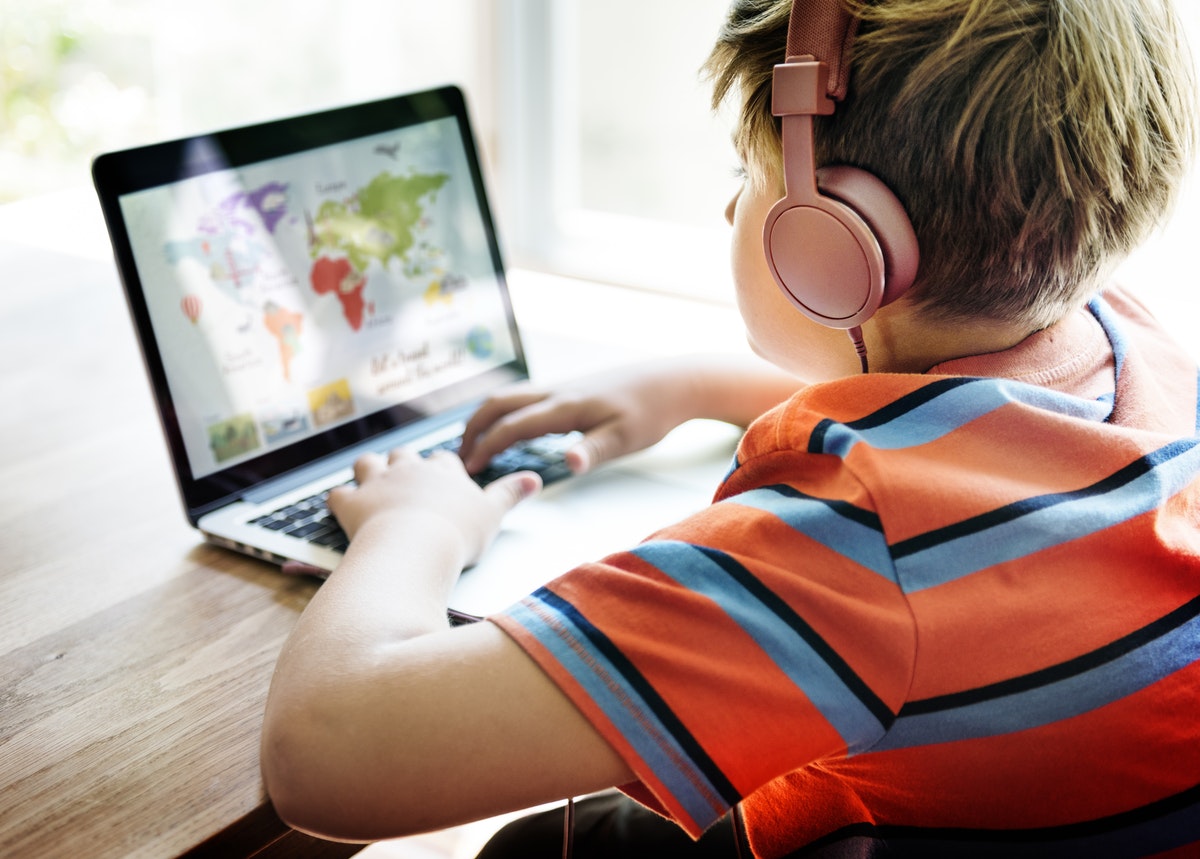Teachers who make the switch to remote teaching are superheroes. They battle technical difficulties, unmotivated students, and the struggle of changing curriculum to meet the needs of a digital learning environment. Distance learning is no easy feat. Yet, many devoted teachers have made it work—and so can you with some guidance from distance learning best practices.
In this post, we’ll uncover some of the best practices that teachers use to improve distance learning for students of every age. These tips will not only help you get through the school year but help you and your students thrive.
{{< blog/cta-download-new content=”Distance Learning eBook” extra=”false”>}}
Distance learning is here to stay
Whether you love it or hate it, distance learning is here to stay. The online learning industry is expected to pass $370 billion by 2026. Though it may not completely replace traditional in-person classrooms, distance learning and hybrid classrooms will likely continue into the next school year and beyond, especially in higher ed.
But because you’re a superhero teacher, you’ve embraced the positive aspects of distance learning. You know that successful remote teaching boils down to a prepared space, a well-designed course, and setting clear expectations for students. Let’s get into the details of these three essential components.
Preparing the distance learning space
Gone are the days of decorating the classroom or giving your whiteboard a deep clean. But, there’s still a lot to be done to ensure your digital teaching space and the technology you use is up to par. Make sure to incorporate the following into your pre-school year preparations.
Choose and test your tools and tech
Depending on your employer, you may be expected to use a specific learning management system or video conferencing software. Before you begin using these tools in your classroom, learn how to use them.
If you’re not the most tech-savvy, contact your IT department, find a knowledgeable peer, or search for video tutorials to become comfortable with the different settings and features (like screen sharing and recording a meeting).
Visual aids
Distractions are an inevitable feature of learning from home. That’s why you need visual aids in your teaching arsenal. These powerful tools keep students focused, improve their learning up to 400 percent, and are processed by the brain 60,000 times faster than text.
What classifies a visual? Anything that supports and illustrates your intended message. So bring out the photographs, video clips, graphs, and applicable objects. Just make sure to clearly communicate how the visual relates to your lesson.
Have a whiteboard handy
You know that visuals are essential, so having access to a whiteboard seems like a no-brainer. Use it to illustrate an idea, share important facts, and solve problems.
But those traditional whiteboards are somewhat restricted in a remote setting. Switch to an interactive whiteboard and enjoy easier lesson planning, diverse annotation settings, and seamless integration with video conferencing apps (plus over 100 other apps).
{{< blog/cta-1 “Create a seamless distance learning experience with Vibe” “https://vibe.us/lp/scenario-education” >}}
Communicate the tech game plan
Set your students and their parents up for success by clearly sharing which apps and technology they will need throughout the course. Not only will your class run more smoothly, but you’ll also earn greater respect from your digitally prepared students.
Keep online lesson materials organized
You may have a treasure trove of helpful resources to share with your class on a file-sharing drive or learning management system — but they’ll just view it as clutter if it’s not organized. Make sure that units are clearly labeled in folders and students have access to the files they need. For easy file sharing, tools like Google Classroom may be a good fit for your class.
Set up a professional background
Before you choose a space to conduct a video conferencing session, ask yourself the following: Is there something in my space that might distract students (e.g., a swivel chair, dirty laundry, or other people)? Do I have enough lighting for students to see me (avoid sitting with your back to a window)? Does my voice echo when I speak (headphones and an area rug can solve this)? Create a remote teaching space that balances professional and personal flair to help students stay attentive.
Invest in a good pair of headphones
When it comes to teaching remotely, your voice is your most precious commodity. Make sure you, and your valuable information, is clearly heard by getting the right pair of headphones. Look for a pair that features a quality microphone and reduces feedback sound.
Related: Help Your School Roll Out New Tech With These Essential Steps
Designing a successful remote course
To keep your digital course running smoothly, you may have to adjust your traditional teaching methods. You’ll find that the overall key to better distance learning is creating and nurturing relationships. Make this your focus as you implement the following course design components to your virtual classroom.
Have as much “face” time as possible
Some say the eyes are the window to the soul. We can often decipher someone’s thoughts and feelings based on their body language, namely the movement of their eyes and other facial expressions. So, it’s imperative that students can clearly see your face when you’re trying to convey a message. Keep your camera on and check your video quality before each class (aim for 720p 30fps or 480p 30fps at the very least).
Use break-out groups
Building relationships and collaborating is more important than ever for remote learners. Help students strengthen these skills and stay social by breaking them into small groups for group work. Have them work on projects together or use the time to share things they’re working on.

Make time for one-on-ones
One-on-one meetings aren’t just for those in the workforce. Students and teachers can greatly benefit from regular meetings to understand needs and expectations. However, if holding multiple one-on-ones is too much of a challenge for your large class, set virtual office hours, so students know when to reach you for a video meeting or phone call. You can also send out regular surveys to students with Google Forms to gauge how they are doing.
Keep students engaged
There are a lot of creative ways to keep remote students engaged. Ultimately, aim to get them talking and sharing by asking questions. Randomly call on each student throughout a lesson to make sure they’re involved and prepared to engage. To keep things truly random, you can even fill a jar of popsicle sticks with the students’ names written on them and pull each stick at random. You can also use the group chat to have students type brief answers to a question and gauge their understanding of a topic.
Remember to take a break
There’s so much content to cover and so little time. But don’t underestimate the power of breaks. Students need breaks to boost brain function and productivity. If you’re worried that students aren’t appropriately using their break time, lead the class in an occasional stretch break to keep them awake and alert.
Make online courses accessible
Before you publish any files or deliver a lecture, consider whether the information you’re sharing is accessible to students with disabilities. Elements like text formatting, video captions, and the pacing of a lesson make a huge difference to those who need extra support. Learn the specifics of how to create accessible online courses to give every student an equal opportunity to learn.
Setting the right expectations for distance learners
Though it’s up to students whether or not they will make the most of distance learning, teachers still play an important role in setting the stage for good habits. As you teach, make sure to share the following expectations with your class.

Cameras and headphones need to stay on
This goes back to the importance of “face” time. Set a clear expectation that students must have their camera on at all times. You may also require them to use a pair of headphones to reduce background noise and ensure their voice is clearly heard when they speak. Though the headphones should physically stay on their ears, make sure that students are muted when they aren’t speaking.
Stick to a schedule
We all need a daily routine for better focus, productivity, and a sense of control—especially with the added flexibility of distance learning. Give students this organization by implementing a schedule or structure to your virtual lessons. If students have multiple classes in a day, encourage them to stick to their schedule and set aside specific hours for study time.
Let the students be the teachers
Students have a world of knowledge right at their fingertips. Let them make the most of their online resources by preparing a short lesson or presentation to share with the class. Give them a prompt with specific topics to cover and encourage them to use videos, websites, and digital files to aid their teaching.
Practice what you preach
You set the ultimate example to students as you choose to follow the rules you set in place for them. If you told students that they need to have their camera on but let a student or two get away with keeping it off, you’re going to start seeing a lot more blank screens. Be a respectful distance teacher and gain greater respect from your students.
When it comes to perfecting the art of remote teaching, there is always room for improvement. Take the first step to better distance learning by adding a Vibe board to your remote or hybrid classroom. Discover how Vibe’s intuitive smartboard helps instructors plan lessons, illustrate ideas, and collaborate with students by requesting a demo or attending an upcoming webinar.
Vibe offers a collaborative solution combining an interactive digital whiteboard and innovative smart software. Increase engagement and efficiency at your brainstorming sessions, virtual training, and classroom sessions by integrating your favorite applications with video conferencing and an infinite, mess-free writing canvas. Collaborate today with Vibe.
Looking for the latest in interactive whiteboard technology? Check out Vibe today!
